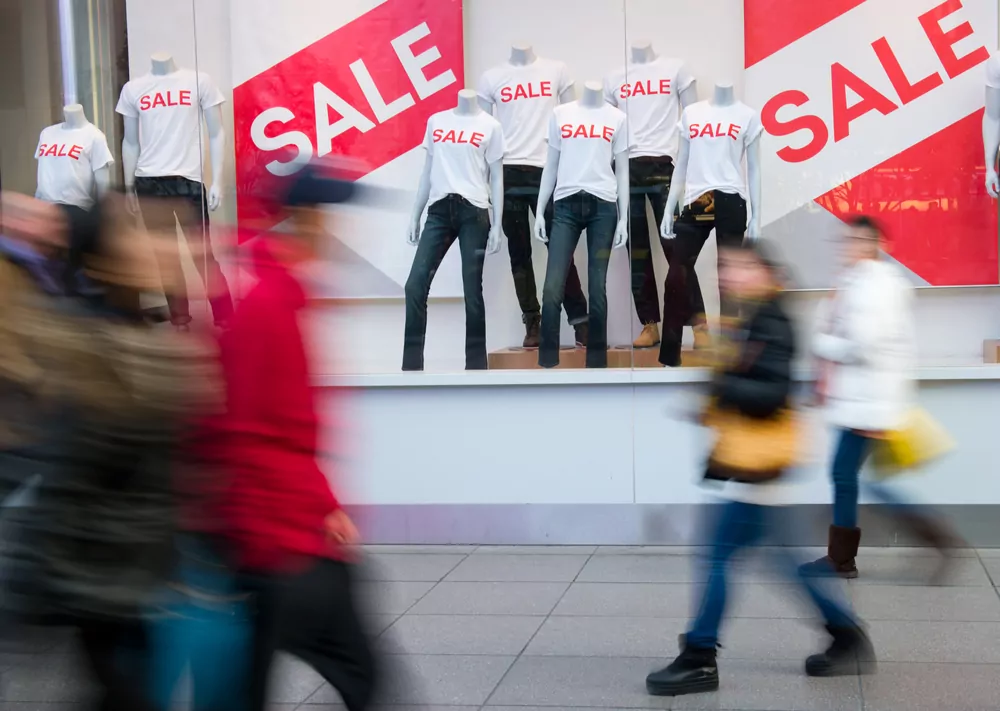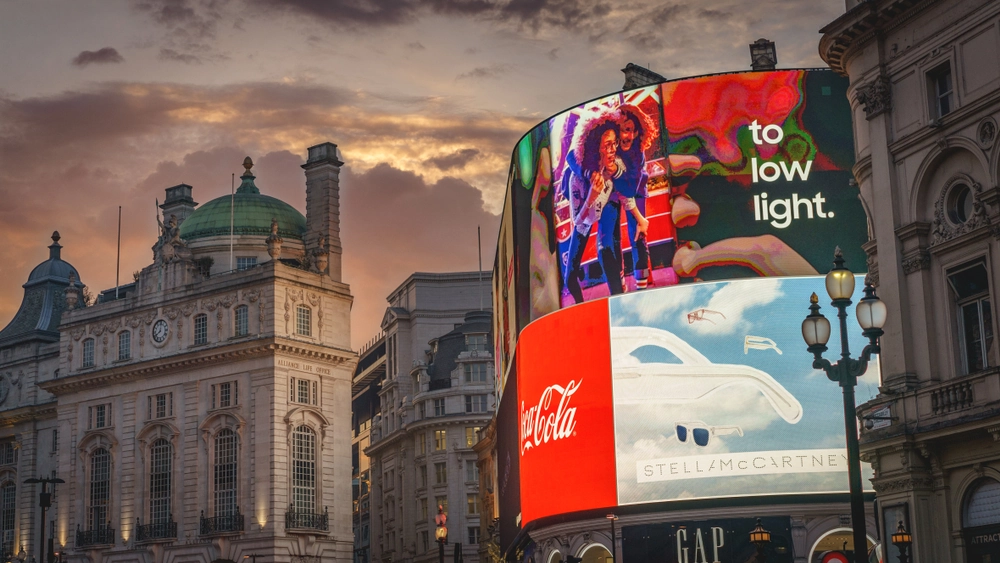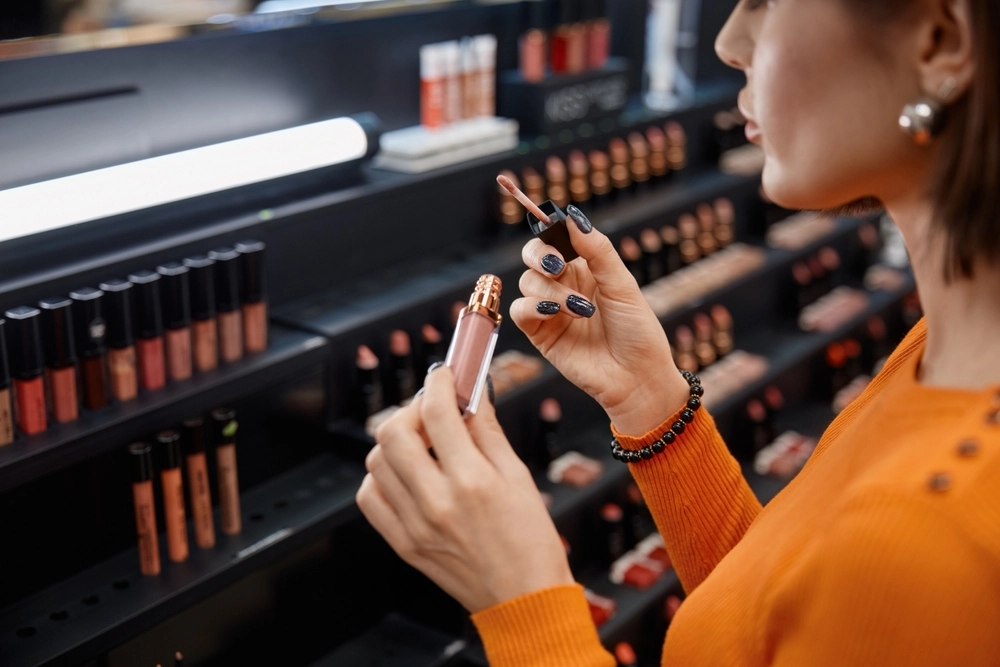
Retail Reduced – May 2025


In this month's review of trends in the Retail and Consumer sector, we look at the Chinese beauty industry, grocery sales increasing on TikTok, and how retailers are blending commerce and culture in their store space.
Trends in the Retail Sector in May 2025
TikTok has recently reported a staggering 180% year-on-year increase in grocery sales, solidifying its place as what some are now calling the “new product discovery engine.” While online grocery shopping has become second nature for many, few could have predicted that TikTok, a platform traditionally known for its short-form videos, would emerge as a popular destination for consumers to stock up on weekly groceries. Remarkably, at least one grocery item, commonly found in supermarkets, is now sold every minute on the platform. In fact, TikTok’s Head of FMCG, Matt Beane, has noted that TikTok Shop has become one of the UK’s largest sellers of toilet paper.
Beyond its growing user base, TikTok Shop’s influence extends to how products are purchased and what consumers add to their digital carts. Viral meal prep videos are driving purchasing trends at an unprecedented rate, with influencers like Emily Mariko’s viral salmon rice bowl and the baked feta pasta recipe causing surges in demand for specific ingredients overnight. The influence of these viral videos on consumer behaviour cannot be underestimated, with platforms like TikTok shaping what’s popular in the grocery aisle.
Retailers are increasingly adapting to this new dynamic. Lidl, for example, became the UK’s first major supermarket to leverage TikTok Shop, and its debut drop sold out in under 20 minutes. This release featured a limited-edition protein bar bundle, which was followed by another drop in March 2025—this time, offering the viral Dubai pistachio bars, which sold at an astonishing rate of 72 bars per second. Notably, Lidl sold these items at the same price as in-store, without promotional discounts, and both drops sold out in record time. According to online retail consultant Martin Newman, Lidl’s TikTok Shop initiative “wasn’t just a PR stunt”, but rather a significant indicator of trends to come. Retailers now have a unique opportunity to use TikTok Shop not just as a sales platform, but also as a marketing hub for launching new, innovative products and curating trendy recipes for meal prep.
For retailers, the potential extends beyond simply capitalising on viral food trends. There’s a clear opportunity to guide consumer preferences toward healthier, locally sourced alternatives. By aligning with trends like high-protein diets or introducing products with exotic flavour profiles—think matcha or lychee juices—retailers can engage a younger, more influential audience and create a sense of cultural exploration within their product offerings.
Beane, who previously worked at Amazon Fresh and Tesco, has predicted that fresh food will play a central role in TikTok Shop’s future. “An ‘always-on’ grocery proposition is something we are working toward,” and “We’re already seeing strong success with fresh food, having tested it over the last six months” he said. Retailers have a prime opportunity to tap into this emerging market and connect with a dynamic, trend-conscious demographic. By aligning with viral TikTok trends, retailers can not only influence purchasing habits but also drive in-store sales—making TikTok Shop a valuable tool for the future of grocery retail.
With consumer data being used on TikTok to predict and influence grocery buying habits, questions can arise in relation to data privacy and compliance regulations. If this is an area of concern please do get in touch with our team here at Foot Anstey, who are more than happy to help you navigate this.
UK retailers have much to gain by observing the trends and innovations emerging from the Chinese beauty industry, particularly as these trends begin to influence the European market. As the world’s second-largest wellness economy, valued at $683 billion, China’s consumer base has long prioritised health and wellbeing. With this strong foundation, the market continues to evolve, introducing new trends such as edible beauty, which is poised to resonate with consumers across various regions.
Chinese consumers are leading the charge in areas such as plant-based protein shakes, sleep gummies, niacinamide-infused breadsticks for skin brightening, and collagen jelly shots aimed at boosting energy and promoting a natural “glow”. These preventative beauty measures offer functional, convenient solutions for individuals seeking to incorporate health and beauty routines into their increasingly busy lifestyles.
Holland & Barrett has successfully capitalised on this emerging trend, with its new skin, hair, and nail capsules gaining popularity among Chinese consumers. Retailers who adapt to global trends, especially when engaging with enthusiastic consumers, are likely to see significant returns. The growing demand for Asian-inspired wellness products is evident, as seen with Korean beauty retailer Pure Seoul, which recently opened its third UK store in Westfield Stratford. The store’s launch saw long queues of beauty enthusiasts eager to explore the brand and its products!
Drawing from these developments, Retail Week highlighted three essential strategies that UK retailers can consider when expanding internationally:
Leveraging popular social media platforms such as Instagram and TikTok for live-streaming sessions allows consumers to engage with and gain a deeper understanding of your brand and products in real-time.
Retailers should stay informed about emerging trends in key markets, such as China, to better understand consumer preferences and consumption habits. This knowledge enables UK brands to tailor their offerings to meet evolving demand.
Experimenting with new ideas and gathering immediate feedback allows retailers to quickly gauge customer reactions, refine their strategies, and adapt their offerings accordingly.
By incorporating these strategies and aligning with the growing trends in global beauty and wellness, UK retailers can position themselves for success in an increasingly competitive international market. If you require any advice on how to stay compliant with UK customs, labelling and safety standards please do get in contact. Alternatively, we are more than happy to advise on any advertising rules to ensure that your brands are complying with consumer protection legislation.
British retailers are realising the value in using their store space as venues for engaging activities, aiming to entice shoppers with unique experiences. This shift comes as brands seek to increase footfall and dwell time (how long customers stay in-store), which can correlate with increased spending. Retailers are responding by filling shops with activities that create reasons to visit beyond just shopping.
This experiential trend spans across diverse retail sectors, with retailers who benefit from strong community engagement benefitting the most. Waterstones continues to draw on its loyal customer base to drive consumer engagement with in-store events. In January, the retailer hosted many late-night launch parties for the release of Rebecca Yarro’s Onyx Storm, with one such launch party at Kingston Waterstones amping up the immersion by offering cocktails inspired by Onyx Storm and additional activities such as creating bookmarks. Events like this help retailers blur the line between commerce and culture, with Waterstones in particular turning from a bookshop into a place for social interaction, creativity and a collective passion for books.
Specialty retail stores like Rough Trade, which sells vinyl and merch, have also enjoyed great success leaning into ‘small capacity‘ live events. By capping its in-store gigs to a limited intake, the retailer can keep logistics simple and preserve an air of exclusivity. The performances can also sit metres away from record racks and merch, potentially turning the show itself into an extended browsing session for the retailer’s goods. Small-footprint events can also reset quickly, allowing stores to return to normal trading relatively quickly and with minimal disruption to day-to-day retail. Rough Trade’s success indicates a tightly curated moment that aligns directly with a retailer’s offering can deepen engagement and stretch dwell time when done correctly.
Still, experiential retail is not a silver bullet. Running after-hours events adds staffing costs and retailers must balance novelty with authenticity; overly gamified or contrived attempts to generate engagement can alienate shoppers as quickly as they attract new ones. When considering experiential retail, retailers should remain aware of the use class of their building and potential licencing restrictions on what goods they have permission to sell. Retailers that can master the art of turning stores into stages are likely to see fuller tills and more dedicated customers, including customers who stay an extra while longer to discover a product that appeals to them.
The UK’s patience with accepting everything as a service is slowly wearing thin. What began as a nifty way to cherry-pick entertainment and useful tech is becoming an untidy pile of direct debits fighting for a space in British households’ monthly budget. Barclays estimates that taking the ad-free tier of just the six most-popular TV streamers now costs £57.94 a month (which comes close to £700 a year); this is before other monthly subscriptions including the gym, music streaming or meal kits are added to the tab.
Subscription tiers are nothing new, though their increase in popularity over recent years may be considered by some to be a ‘silent surcharge’. Features once taken for granted, including ad-free viewing experiences, can no longer be counted on as staple benefits of subscription packages; it is now normal to consider seemingly basic features like ad-free viewing as luxuries that warrant stepping one’s subscription up a tier.
Phenomena such as tiered subscriptions only exacerbate simmering anxieties around subscription-based services, including the sheer number of subscription-based services out there. These anxieties are not uniquely British, either; ExpressVPN’s survey of 4,000 individuals in the US, UK, France and Germany had ‘nearly 40% confess to feeling bogged down by the number of digital subscriptions they manage‘, with reservations about ‘keeping track of renewal dates‘ and ‘juggling multiple accounts’ being spotlighted. Services that are expected to make one’s life easier now feel as if they require excel spreadsheets to manage and, in a climate where consumers are generally reducing discretionary spending (except for travel), retailers should be extra cautious about whether value can be delivered to consumers through other means of payment.
The DMCC 2024 aims to introduce useful guardrails to help consumers keep track of running subscriptions with traders. Such guardrails provisionally include the obligation on traders to send reminders before trial periods end and for traders to avoid adding unnecessary steps before a consumer can terminate a subscription contract. Although the provisions regarding subscriptions are not yet in effect, retailers should be on notice that rules on the appropriate use of subscription models are set to tighten and consider ahead of time how their own subscription models could be made more consumer friendly.
The subscription model in and of itself is not under threat, but it is evolving. The winners in this shifting landscape will be those who respond thoughtfully to consumer demands, emphasising transparency, flexibility and genuine value. As UK consumers become increasingly discerning about precisely what subscriptions are worth their money, companies that adapt quickly to this changing sentiment stand a better chance of retaining consumer trust (and their slice of households’ monthly budget).































































